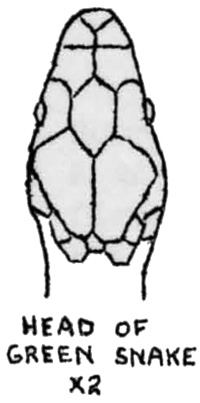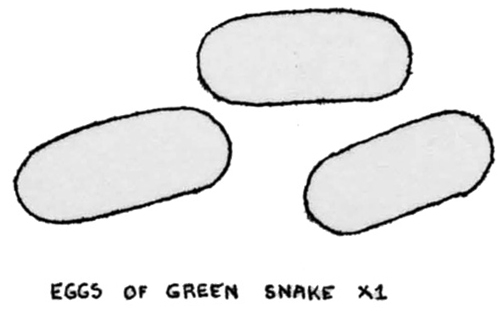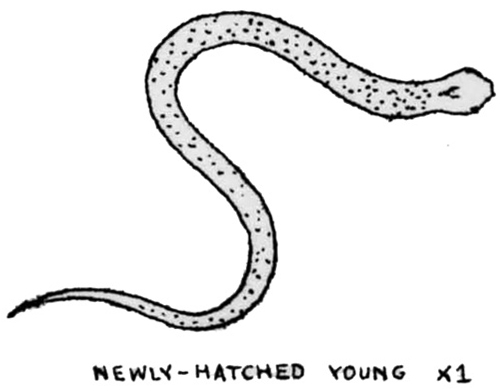

|
|
NATURE NOTES FROM ACADIA

In late July, during the course of one of our Children's afternoons, we came upon an old stump in an open grassy field near Bar Harbor. The bark around it was loose and, being in quest of any living thing which might be of interest to the group, I started to remove it. Hardly had the first strippings been scaled off when suddenly a full-grown Green Snake and a cluster of four of its white eggs were exposed to view. All were collected by the now much interested party and we proceeded on our way. Two or three more stumps in the near vicinity were examined but these yielded no treasures. But our real find was not far away. Within a hundred yards of where the first strike was made we came upon a large punky old stump of some tree which had been cut close to the ground. What bark there was around it was easily removed, and to our great surprise and delight a cluster of 30 eggs of the same species of snake was discovered. Some of these were as though glued together in clusters of six or eight eggs, and all were neatly tucked away in the soft red rotted wood of the old stump, just inside the bark. We were now "snake-minded," and to the enjoyment of everyone a total of eight Green Snakes was collected in the hour spent in the nearby grassy fields. 
Upon returning to the Park Office I packed a number of the eggs into a container which I had filled with soft well-rotted wood and in the days that followed the substance which surrounded the eggs was kept moistened. We were hopeful. 
Twenty days later, on August 17, four baby Green Snakes, each measuring around four and one-half inches, had hatched. On the following day two more had burst through the soft white leathery shells. On August 19, three additional snakelings had their little heads more or less out of the eggs in which their grayish bodies were coiled. These, however, did not emerge until on the following day. On the 22nd, baby Green Snake number 10 had the tip of its nose out of the egg. All were of approximately the same size, about four and one-half inches from tip to tip. Since Ditmars, in his "Reptile Book," makes the statement that about a dozen eggs seem to be the maximum number deposited, to find a cluster of 30 would point to the egg-laying activities of at least three females in this one stump. The absence of other suitable places for egg-deposition in this area probably accounts for this concentration. - Ranger-Naturalist |
| <<< Previous | > Cover < | Next >>> |
nature_notes/acad/vol1-2f.htm
09-Jan-2006